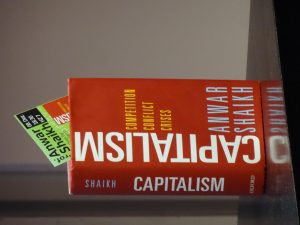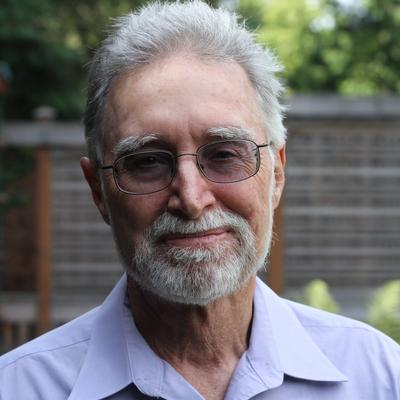India, Where Workers Are Labelled 'Apprentices' or 'Executives', but Unions Are Fighting Back
✑ K. HEMALATA (INTERVIEW)` ╱ ± 11 minutes


The challenges facing Indian workers and their strategies to fight back are explained through the insights and expertise of K. Hemalata, president of the Center of Indian Trade Unions (CITU).

The government has provided many a loophole for employers to undermine labour laws.

The challenges facing Indian workers and their strategies to fight back are explained through the insights and expertise of K. Hemalata, president of the Center of Indian Trade Unions (CITU).
From: Tricontinental Institute, July 2, 2019. ╱ About the author
K. Hemalata is the president of one of the key labour federations of India, the Centre for Indian Trade Unions (CITU). She is also a Central Committee member of the Communist Party of India (Marxist) and a veteran of the trade union movement in particular as the General Secretary of the All-India Federation of Anganwadi (child care) Workers and Helpers.
Over the past few decades, Indian workers have faced the crushing blows of neo-liberal policy and at the same time fought against them in a spectacular way. Several of the general strikes in the past few years have broken world records – 180 million workers on strike in 2016, 200 million this year. Since India won its independence in 1947, it has pursued a ‘mixed’ path of national development. Important sectors of the economy were kept in government hands, while new public sector firms were established to manufacture essential industrial goods, in line with the country’s development goals. The agricultural sector was also organised so that the government provided credit to farmers at subsidised rates and the government set procurement prices to ensure that farmers continued to grow essential food crops.
All of this changed in 1991 when the government began to ‘liberalise’ the economy, privatise the public sector, reduce its role in the agricultural market and welcome foreign investment. Growth was now premised on the rate of return on financial investment and not on the investment in people and their futures. The new policy orientation – liberalisation – created a new middle class and earned the wealthy fabulous amounts of money. But it has also created an agrarian crisis and produced a precarious situation for workers. The government, since 1991, knew that it was not enough to privatise the public sector and to sell off precious public assets to private hands. It had to do two more things. First, it had to make sure that public sector enterprises would fail and would then lose legitimacy. The government starved these public sector firms of funds and watched them swing in the wind. Without investment, these firms were unable to make improvements and so began to deteriorate. Their demise validated the argument of liberalisation even though their demise had been manufactured by an investment strike. Second, the government pushed to break trade union power by using the courts to undermine the right to strike and by using the legislature to amend trade union laws. Weaker unions would mean demoralised workers, which would mean that workers would now be utterly at the mercy of the private firms.
However, Indian workers and trade unions have not given up. Ten major worker federations have helped organise seventeen major general strikes over the course of the past fifteen years. One of the key labour federations is the Centre for Indian Trade Unions (CITU), which celebrated its 50th anniversary this year. CITU has a membership of over six million workers. CITU’s president is K. Hemalata, who is also a Central Committee member of the Communist Party of India (Marxist) and a veteran of the trade union movement in particular as the General Secretary of the All-India Federation of Anganwadi (child care) Workers and Helpers. Hemalata spoke to Tricontinental: Institute for Social Research about the structure of the Indian workforce, about worker militancy and about the challenges before the trade union movement..
Read the rest of the interview (pages 13-38) on thetricontinental.org.
All of this changed in 1991 when the government began to ‘liberalise’ the economy, privatise the public sector, reduce its role in the agricultural market and welcome foreign investment. Growth was now premised on the rate of return on financial investment and not on the investment in people and their futures. The new policy orientation – liberalisation – created a new middle class and earned the wealthy fabulous amounts of money. But it has also created an agrarian crisis and produced a precarious situation for workers. The government, since 1991, knew that it was not enough to privatise the public sector and to sell off precious public assets to private hands. It had to do two more things. First, it had to make sure that public sector enterprises would fail and would then lose legitimacy. The government starved these public sector firms of funds and watched them swing in the wind. Without investment, these firms were unable to make improvements and so began to deteriorate. Their demise validated the argument of liberalisation even though their demise had been manufactured by an investment strike. Second, the government pushed to break trade union power by using the courts to undermine the right to strike and by using the legislature to amend trade union laws. Weaker unions would mean demoralised workers, which would mean that workers would now be utterly at the mercy of the private firms.
However, Indian workers and trade unions have not given up. Ten major worker federations have helped organise seventeen major general strikes over the course of the past fifteen years. One of the key labour federations is the Centre for Indian Trade Unions (CITU), which celebrated its 50th anniversary this year. CITU has a membership of over six million workers. CITU’s president is K. Hemalata, who is also a Central Committee member of the Communist Party of India (Marxist) and a veteran of the trade union movement in particular as the General Secretary of the All-India Federation of Anganwadi (child care) Workers and Helpers. Hemalata spoke to Tricontinental: Institute for Social Research about the structure of the Indian workforce, about worker militancy and about the challenges before the trade union movement..
In India, a large part of the workforce is in the informal
sector. What challenge does this pose to the trade union
movement?
sector. What challenge does this pose to the trade union
movement?
The trade union movement globally has been weakened by neo-liberal policies. Trade union rights and trade unions themselves have been under attack. In India, we find that trade unions have not lost our membership. However, only 10% of Indian workers are in the unions affiliated with central trade union federations. According to the National Commission for Enterprises in the Unorganised Sector, about 93% of the Indian workforce is in the unorganised sector with most of them being agricultural workers. We, in the trade union movement, differentiate between the unorganised sector and unorganised workers. Much of the unorganised sector is made up of small firms that employ only one or two workers. But the unorganised workers are not just those who are working in these small firms; they are also workers who are in government employment or employed in large private sector companies who have not yet organised themselves. The increasing tendency by the government as well as large corporations to contractualise and casualise their work force is making the task of unionisation very complicated.
The government has provided many a loophole for employers to undermine labour laws. One such loophole is through the schemes for apprenticeships. Workers are not treated as workers but as apprentices who do not earn a wage but only a stipend with no benefits. The National Employability Through Apprenticeship Programme (NETAP) is a joint-venture between the Ministry of Labour and various non-governmental organisations. Agencies that supply workers to employers – such as the Indian online recruitment and job portal TeamLease – are part of this scheme. The agency signs a contract with the firm and supplies workers, who are then moved around between firms. The workers can remain as apprentices for their entire work life. If you are an ‘apprentice’, then you are not a worker. If you are an ‘executive’ or a ‘volunteer’, then too you are not a worker. Workers in sales are now known as executives. Even workers in the National Child Labour Project of the Ministry of Labour are given designations such as ‘volunteer’, ‘friend’, or ‘guest’ so that they are not counted as workers and therefore they cannot be brought under the protections of India’s labour laws.
Importantly, when we go to organise contract workers or ‘apprentices’ or ‘friends’, we find them very receptive to the unions. Some ‘apprentices’ who are hired by the Indian Railways – India’s largest employer – formed an organisation and held a demonstration in Delhi to demand that they be made regular employees. The dichotomy between permanent workers and contract workers needs to be broken down and we need to use our limited resources to organise all workers everywhere.
The increasing tendency by the government as well as large corporations to contractualise and casualise their work force is making the task of unionisation very complicated.None of the governments over the past decades have been able to amend India’s fairly strong labour laws. But they have used different methods to weaken labour rights. The rightwing BJP government has extended fixed-term employment in which workers are given contracts that run for a few weeks; in Haryana, workers are hired for just an hour or two hours on fixed-term contracts. The government notification – because it is constrained by labour laws – says that even fixed-term workers get wages and benefits that are given to permanent workers. But which fixed-term worker – who is employed for a few hours – is going to fight for higher wages or benefits? Fixed-term workers cannot complain or make demands for their rights – not if they want the employer to continue to give them an hour of work here and an hour of work there. The workers are under immense pressure not to demand anything. But, if workers do not fight, they do not get what is due to them.
The government has provided many a loophole for employers to undermine labour laws. One such loophole is through the schemes for apprenticeships. Workers are not treated as workers but as apprentices who do not earn a wage but only a stipend with no benefits. The National Employability Through Apprenticeship Programme (NETAP) is a joint-venture between the Ministry of Labour and various non-governmental organisations. Agencies that supply workers to employers – such as the Indian online recruitment and job portal TeamLease – are part of this scheme. The agency signs a contract with the firm and supplies workers, who are then moved around between firms. The workers can remain as apprentices for their entire work life. If you are an ‘apprentice’, then you are not a worker. If you are an ‘executive’ or a ‘volunteer’, then too you are not a worker. Workers in sales are now known as executives. Even workers in the National Child Labour Project of the Ministry of Labour are given designations such as ‘volunteer’, ‘friend’, or ‘guest’ so that they are not counted as workers and therefore they cannot be brought under the protections of India’s labour laws.
Importantly, when we go to organise contract workers or ‘apprentices’ or ‘friends’, we find them very receptive to the unions. Some ‘apprentices’ who are hired by the Indian Railways – India’s largest employer – formed an organisation and held a demonstration in Delhi to demand that they be made regular employees. The dichotomy between permanent workers and contract workers needs to be broken down and we need to use our limited resources to organise all workers everywhere.
One of the key elements of the working class today is what
is known as precarious work – with the workers known
as the precariat, the precarious proletariat. How has the
trade union movement tackled the challenges posed by this
development?
is known as precarious work – with the workers known
as the precariat, the precarious proletariat. How has the
trade union movement tackled the challenges posed by this
development?
Our belief is that we must organise the contract workers with the demands of the permanent workers. There should be no difference made between them. If permanent workers’ unions are not convinced that they should include contract workers, we form separate contract worker unions to build their strength. We find that the contract workers are very militant. In the major general strikes of 2015 and 2016, we found that about 40% of those who participated were not in any trade union.
One of the best examples of our work is with regard to the anganwadi (child care centre) workers. In 1989, we initiated contact with the workers of the Integrated Child Development Scheme (ICDS) who are otherwise called anganwadi workers. In Andhra Pradesh – where I am from – we went from village to village to locate the anganwadi centres. When we met the workers, they told us that their main grievance was low wages. Moreover, they were considered ‘social workers’ and not workers as such. We found that the women workers faced harassment – even sexual harassment – at work. They were forced to work in the homes of their officers. Their anger at low wages and at harassment made them very militant. We held regular meetings, where the women pushed an agenda to struggle. They were very brave. In the face of retrenchment and of police attacks, they fought on. A lot of political pressure was exerted on these women. But their confidence in the union could not be broken. This has been a very successful struggle amongst the more precarious workers. It helped us sharpen our analysis about the importance of working amongst such workers and about the importance of taking all of their grievances – not only low wages – seriously.
The anganwadi workers are what we call ‘scheme workers’ – they work in various schemes of the government of India. The Child Development Scheme workers are anganwadi workers. The National Health Mission, set up in 2005 by the Indian Ministry of Health and Family Welfare, was staffed by Accredited Social Health Activists (ASHA) workers. The anganwadi and ASHA workers are both ‘scheme workers’, as are the midday meal workers (who provide the midday meal for school children) and the Development of Women and Children in Rural Areas (DWCRA) workers.
Workers in each of these schemes suffer from low wages, from being given titles that deny them labour rights (such as ‘helper’ or ‘friend’). We held a massive mobilisation of scheme workers in November 2012 to inform those who work in individual schemes that they are not alone and that they need to unite both on their separate platforms and together around common struggles to fight for their rights.
Take the case of the auxiliary nurse midwives – ANMs. Every primary health centre in villages hires one ANM. Now the government is hiring a second ANM, but under a different name. The second person will be called a ‘social worker’ and paid a lump sum amount instead of a proper wage. Or take the case of the Sarva Shiksha Abhiyan, the elementary education scheme. There are sikshamitras – or ‘guest teachers’ – and vidya volunteers who are given a fixed amount instead of wages, and no benefits.
The National Health Mission hires nurses and staff for its hospitals and health centres. The governments of India and Norway have come to an agreement to expand this scheme, but the workers hired as part of the expansion are not treated as full-time workers. They are called yashoda mamata. Yashoda is the foster mother of Krishna, a Hindu god. These yashodas who work for the National Health Mission are paid a pittance – 3000 rupees per month. They work around the clock, doing all the work from patient intake to child deliveries to immunisation to record keeping. After three years of such work, a yashoda will be replaced by another yashoda. Almost one crore (ten million) workers – mostly women – work in this scheme.
In the government’s agricultural department, there were permanent employees with the title ‘agricultural extension officer’. Now they have been replaced in many parts of India by precarious workers with titles such as adarsha rythu (‘model farmer’) and krishak sathi (‘farmer’s friend’). They are seen as ‘assistants’ and ‘friends’, not as workers. They are given 1500 rupees per month as an honorarium and not as a salary. The same kind of thing has happened to the staff of the National Child Labour Project.
All of these workers – from nurses to midwives to childcare workers – have formed unions. Our task is to consolidate these struggles.
One of the best examples of our work is with regard to the anganwadi (child care centre) workers. In 1989, we initiated contact with the workers of the Integrated Child Development Scheme (ICDS) who are otherwise called anganwadi workers. In Andhra Pradesh – where I am from – we went from village to village to locate the anganwadi centres. When we met the workers, they told us that their main grievance was low wages. Moreover, they were considered ‘social workers’ and not workers as such. We found that the women workers faced harassment – even sexual harassment – at work. They were forced to work in the homes of their officers. Their anger at low wages and at harassment made them very militant. We held regular meetings, where the women pushed an agenda to struggle. They were very brave. In the face of retrenchment and of police attacks, they fought on. A lot of political pressure was exerted on these women. But their confidence in the union could not be broken. This has been a very successful struggle amongst the more precarious workers. It helped us sharpen our analysis about the importance of working amongst such workers and about the importance of taking all of their grievances – not only low wages – seriously.
We find that the contract workers are very militant. In the major general strikes of 2015 and 2016, we found that about 40% of those who participated were not in any trade union.The government now wants to privatise the ICDS, turning over child development schemes to non-governmental organisations and to the private sector. We decided that it is not enough for our union to oppose this privatisation, but that we should mobilise broader village communities against it. The government has basically eroded the ICDS, providing inadequate food for the children and letting the infrastructure – such as the water supply – deteriorate. Anganwadi workers and our union have begun to explain to villagers that the workers want to do their job well, but they cannot do so for lack of resources. Privatisation, instead of solving this problem, is going to make it worse – since now these services will be provided for profit and not for the well-being of the community. We have been mobilising the beneficiaries of these schemes – entire villages – to go to the Child Development Project offices to demonstrate. The officers had to admit that it is not the fault of the anganwadi workers that the services are not as good as they could be. This admission has given the villagers faith in the anganwadi worker and in the union. It has in fact given the villagers faith in the idea of the union. Construction workers and factory workers in the village now think of unionisation as something positive. So do health care workers, whose militancy is linked to the militancy of anganwadi workers. These campaigns have been contagious.
The anganwadi workers are what we call ‘scheme workers’ – they work in various schemes of the government of India. The Child Development Scheme workers are anganwadi workers. The National Health Mission, set up in 2005 by the Indian Ministry of Health and Family Welfare, was staffed by Accredited Social Health Activists (ASHA) workers. The anganwadi and ASHA workers are both ‘scheme workers’, as are the midday meal workers (who provide the midday meal for school children) and the Development of Women and Children in Rural Areas (DWCRA) workers.
Workers in each of these schemes suffer from low wages, from being given titles that deny them labour rights (such as ‘helper’ or ‘friend’). We held a massive mobilisation of scheme workers in November 2012 to inform those who work in individual schemes that they are not alone and that they need to unite both on their separate platforms and together around common struggles to fight for their rights.
Take the case of the auxiliary nurse midwives – ANMs. Every primary health centre in villages hires one ANM. Now the government is hiring a second ANM, but under a different name. The second person will be called a ‘social worker’ and paid a lump sum amount instead of a proper wage. Or take the case of the Sarva Shiksha Abhiyan, the elementary education scheme. There are sikshamitras – or ‘guest teachers’ – and vidya volunteers who are given a fixed amount instead of wages, and no benefits.
The National Health Mission hires nurses and staff for its hospitals and health centres. The governments of India and Norway have come to an agreement to expand this scheme, but the workers hired as part of the expansion are not treated as full-time workers. They are called yashoda mamata. Yashoda is the foster mother of Krishna, a Hindu god. These yashodas who work for the National Health Mission are paid a pittance – 3000 rupees per month. They work around the clock, doing all the work from patient intake to child deliveries to immunisation to record keeping. After three years of such work, a yashoda will be replaced by another yashoda. Almost one crore (ten million) workers – mostly women – work in this scheme.
In the government’s agricultural department, there were permanent employees with the title ‘agricultural extension officer’. Now they have been replaced in many parts of India by precarious workers with titles such as adarsha rythu (‘model farmer’) and krishak sathi (‘farmer’s friend’). They are seen as ‘assistants’ and ‘friends’, not as workers. They are given 1500 rupees per month as an honorarium and not as a salary. The same kind of thing has happened to the staff of the National Child Labour Project.
All of these workers – from nurses to midwives to childcare workers – have formed unions. Our task is to consolidate these struggles.
Read the rest of the interview (pages 13-38) on thetricontinental.org.
| Top image: K Hemalata, President of the Centre of Indian Trade Unions (CITU), addressing the March to Parliament by Child Care Workers organised by the All India Federation of Anganwadi Workers and Helpers (AIFAWH). New Delhi, February 2019. Photo credits: CITU Archives. |
|---|






















Comments
Post a Comment
Your thoughts...